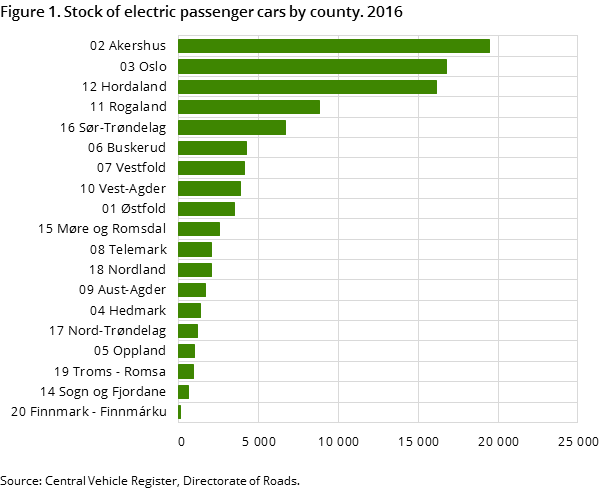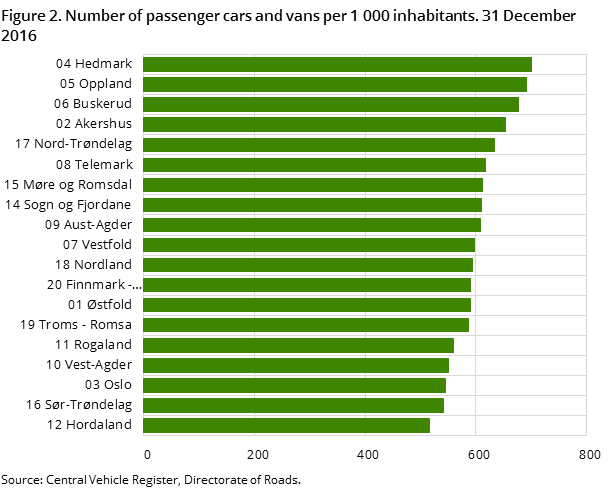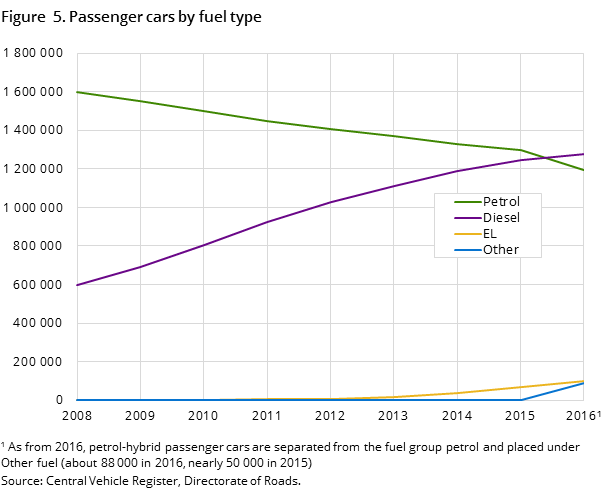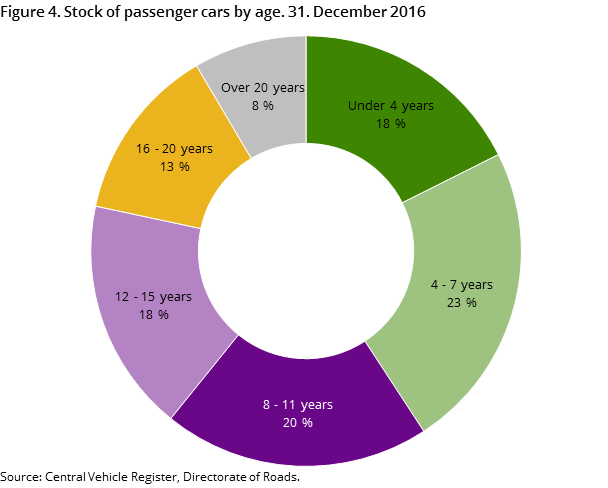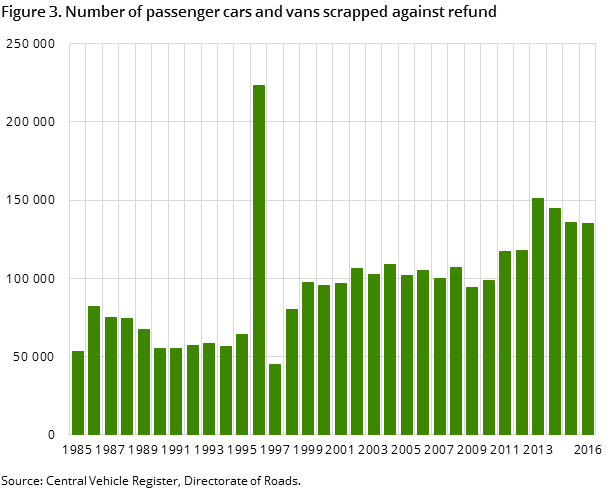Almost 100 000 electric passenger cars
Published:
At the end of 2016, there were almost 2.7 million registered passenger cars in Norway, and nearly 100 000 of them were electric. This was 2.1 per cent more than at the end of 2015. The number of electric passenger cars increased by over 40 per cent.
- Full set of figures
- Registered vehicles
The passenger car population is steadily increasing, and tends to only fall during economic downturns. The last time the passenger population declined was in 1996, which was a result of a record number of cars being scrapped for a refund. Since 1996, the passenger car population has increased by 1 million vehicles, or 60 per cent.
At 31 December 2016, there were a total of 3.24 million registered vehicles in Norway, 1.9 per cent more than in 2015. The passenger cars constituted 82 per cent of all registered vehicles.
100 000 electric passenger cars
The number of electric passenger cars continues to increase at a rapid pace. In February this year, the stock passed 100 000, but at year-end 2016/2017 the number was 97 500. This is 41 per cent more than the year before.
Akershus still has the most electrically powered passenger cars, with 19 450. This is 43 per cent more than the year before. Oslo and Hordaland counties have the next highest number of registered electric passenger cars, with 16 773 and 16 171 respectively. The largest percentage growth in the electric passenger car population from 2015 to 2016 was in Telemark, with an increase of 88 per cent to 2 066 cars. Given that the driving range remains a challenge for most electric cars, it is no big surprise that the county with by far the fewest electric cars is Finnmark, with a modest 135.
Among the municipalities, Oslo has the most registered electric passenger cars (16 773), followed by Bergen (9 400), Bærum (6 733) and Trondheim (4 190). Calculated per 1 000 inhabitants, most electric cars were registered in Finnøy municipality, with 87 (281 in total) followed by Askøy with 68 (1 958 in total).
Proportion of diesel passenger cars continues to rise
The stock of diesel cars continues to increase, albeit weakly. Forty-eight per cent of all registered passenger cars were running on diesel at the beginning of 2017, compared with 47.6 per cent the year before. A total of 44.9 per cent of passenger cars use petrol. Note that from 2016 petrol-hybrid passenger cars are separated from the fuel group petrol and placed under the group Other fuel..
Vans are diesel-driven
A total of 461 500 vans were registered at the end of 2016; 2.5 per cent more than the year before. Overall, 93 per cent of them were diesel powered. Only 0.6 per cent, or 2 568 were electric. This is still an increase of 760 electric vans from the previous year.
Increase in average age
The average age of passenger cars has not changed over the last six years. From the end of 2015 to the end of 2016, it increased by 0.1 years to 10.6 years.
The oldest passenger car stock is registered in Oppland, with an average age of 13.1 years. The average age was decidedly lowest in Oslo, with 7.6 years.
At the end of 2016, the average van was 8.6 years old. Oppland had the oldest with an average of 10.9 year. Vans registered in Oslo had an average age of 4.7 years.
Scrap number stable
A total of 135 000 cars were scrapped for a refund during 2016. Out of these, 121 500 were passenger cars and 13 400 were vans. A total of 0.9 per cent fewer cars were scrapped and 1.2 per cent more vans than in 2015. The average age at the time of scrapping was 18.3 years for passenger cars and 15.3 years for vans.
Contact
-
Asbjørn Willy Wethal
-
Bente Elisabeth Andresen
-
Statistics Norway's Information Centre

